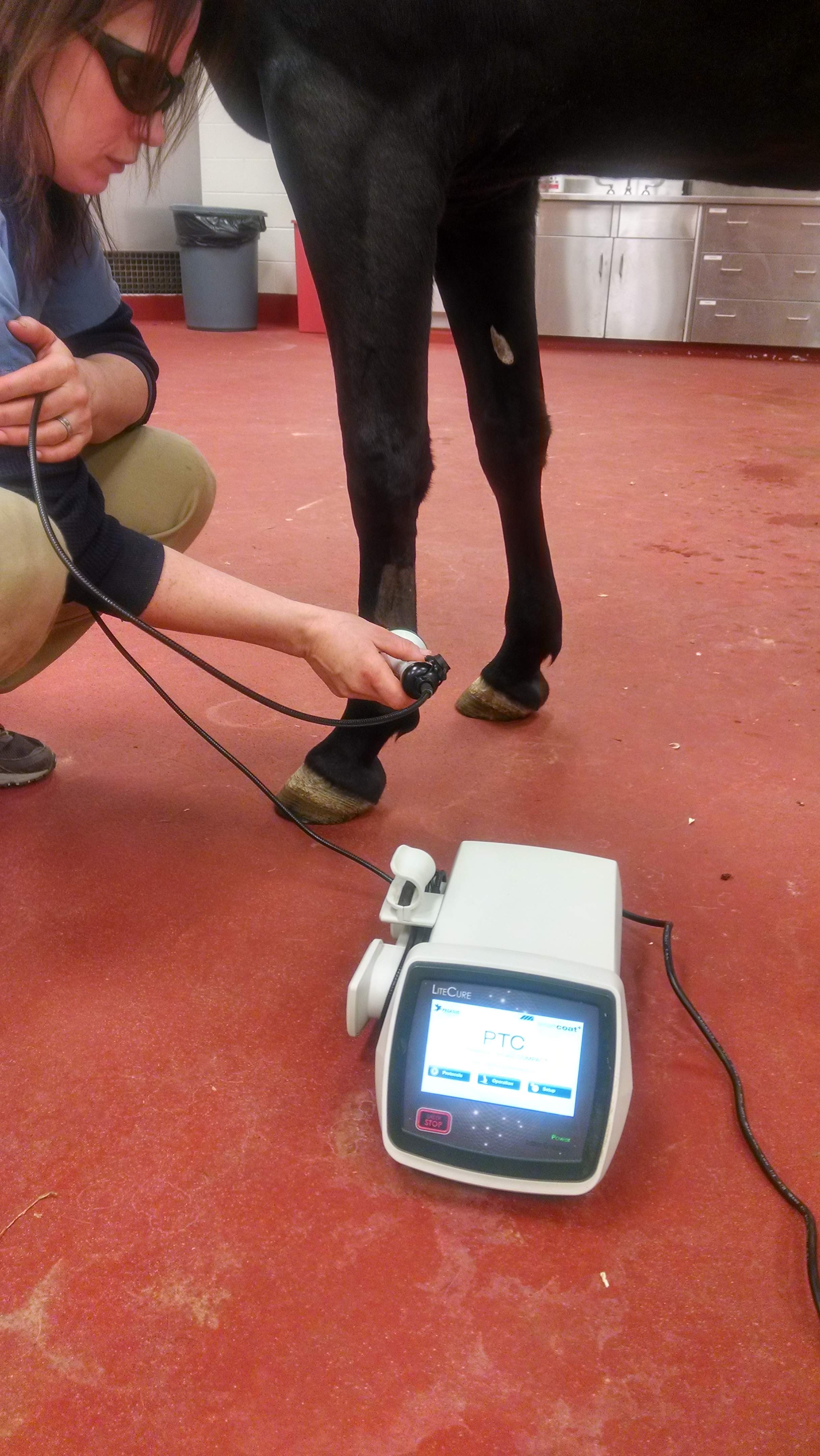The Power of Equine Therapy for Anxiety, PTSD, and Psychological Recovery
The Power of Equine Therapy for Anxiety, PTSD, and Psychological Recovery
Blog Article
Assessing the Performance of Laser Treatment in Equine Treatment for Injury Recovery
The assessment of laser treatment's effectiveness in equine injury rehab hinges on numerous variables, consisting of recuperation time, discomfort mitigation, and tissue regrowth. Veterinarians often observe superior outcomes with laser therapy contrasted to standard techniques, positioning it as a crucial component in equine treatment.
Understanding Laser Treatment
Laser treatment has actually come to be a critical device in veterinary medication, particularly in the treatment of equine conditions. Recognized for its non-invasive nature and efficiency, laser therapy entails the application of particular wavelengths of light to promote cells repair and lower swelling. This restorative modality is significantly preferred for its capacity to accelerate the recovery procedure in steeds suffering from a selection of musculoskeletal injuries and persistent problems.
The primary system behind laser treatment is its capability to improve cellular features. Furthermore, laser treatment advertises vasodilation, enhancing blood circulation and oxygen distribution to broken cells, therefore speeding up healing.
In equine medicine, laser therapy is specifically useful for problems such as tendonitis, osteoarthritis, and injury healing. The method is lauded for its pain-relieving residential or commercial properties, permitting steeds to restore movement and function extra rapidly. Veterinarians likewise value its very little negative effects compared to various other therapy methods, making it a dependable and safe choice for equine care.

Just How Laser Therapy Functions

Upon absorption, these photons cause a collection of biochemical modifications, improving mitochondrial function and resulting in raised adenosine triphosphate (ATP) manufacturing. This increase in ATP accelerates cellular metabolism, promoting tissue fixing and regrowth. Additionally, laser treatment modulates inflammatory feedbacks by affecting cytokine degrees and lowering oxidative tension, thereby relieving pain and swelling.
Another significant element of laser treatment is its function in boosting microcirculation. The treatment promotes vasodilation, boosting blood circulation and oxygen distribution to damaged tissues (Equine Therapy). This assists in the removal of cellular debris and sustains the spreading of fibroblasts and collagen synthesis, critical for wound healing
Professional Proof
The efficiency of laser therapy in equine therapy has actually been corroborated with numerous scientific research studies, showcasing its healing prospective across a range of problems. A study conducted by Turner et al. (2012) showed that steeds treated with low-level laser therapy (LLLT) for ligament injuries displayed sped up recovery contrasted to those getting conventional therapies.
Likewise, study by Johnson and colleagues (2015) focused on equine muscle mass injuries, revealing that laser therapy dramatically expedited muscle fiber regeneration and minimized muscular tissue tightness. Scientific analyses have actually revealed that laser therapy can reduce persistent problems such as osteo arthritis.
Veterinarian Insights

Veterinarians also appreciate the flexibility of laser treatment. It can be utilized for a variety of conditions, from superficial wounds to deeper musculoskeletal injuries. Dr. Emily Brown highlights its energy in dealing have a peek at this website with conditions like tendonitis and osteo arthritis, where conventional therapies often fail. She directs out that laser therapy can be customized to the certain requirements of each equine, ensuring optimal end results.
Additionally, vets value the capacity to incorporate laser treatment with various other therapy methods. This multimodal approach can enhance overall treatment effectiveness, supplying a comprehensive service for equine rehab. Such endorsements from experienced experts highlight the expanding approval and application of laser treatment in equine medication.
Practical Factors To Consider
A vital aspect of executing laser treatment in equine therapy includes comprehending the functional considerations that guarantee its efficiency and security. Firstly, it is important to select the appropriate laser device, as different types vary in wavelength, power, and infiltration depth. Equine Therapy. Veterinarians should be fluent in these specifications to tailor treatment protocols properly to each injury kind
In addition, the regularity and duration of laser therapy sessions require careful planning to optimize healing advantages while reducing any possible unfavorable results. Consistent monitoring of the steed's action to treatment can direct needed adjustments in the treatment routine. Establishing a risk-free and controlled setting during treatments is additionally vital to protect against unintentional direct exposure navigate here to laser discharges, which might hurt both the equine and the handler.
Educating and qualification of personnel providing laser treatment are extremely important to make sure correct strategy and to promote security standards. Additionally, keeping accurate documents of each session, including laser settings and observed end results, is crucial for evaluating the general performance of the treatment and for making data-driven choices.
Conclusion
Laser therapy has arised as an effective method in equine injury rehabilitation, providing significant advantages in healing time, pain relief, and tissue healing. For optimal outcomes, constant monitoring and individualized therapy procedures continue to be crucial in leveraging the full possibility of laser therapy in equine treatment.
Report this page